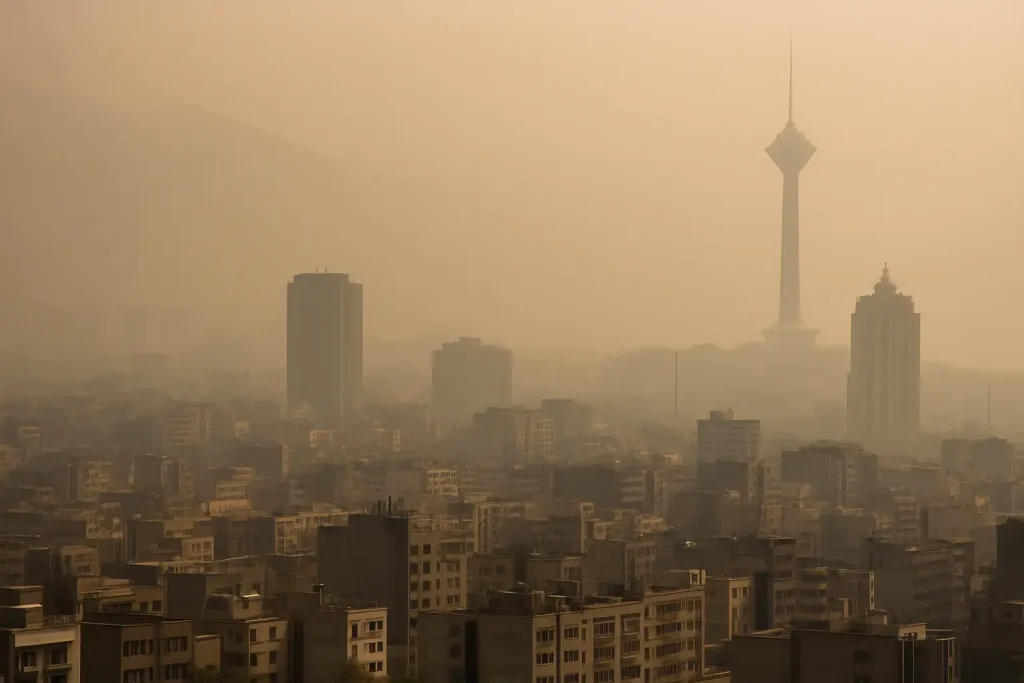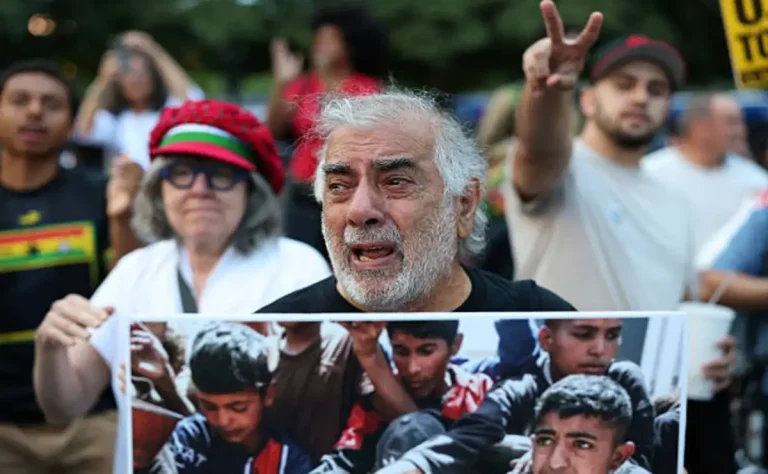
Tehran skyline blanketed in smog as ozone surge pushes air quality into red alert.
Ozone Levels Behind Tehran Air Pollution Spike
Ground-level ozone forms when nitrogen oxides and volatile organic compounds react under strong sunlight. While protective in the upper atmosphere, ozone becomes a harmful pollutant at surface level, especially in urban areas with high emissions and intense sunlight like Tehran.
Monitoring stations across the capital recorded concentrations exceeding the World Health Organization’s recommended limits.
Areas including Shahr-e-Ziba and Sadeghieh saw the highest hourly averages. The AQCC warned that ozone levels typically peak between late morning and early afternoon, coinciding with the city’s heat and traffic surges.
Health Risks Escalate Across Population
The Ministry of Health has issued public warnings urging residents to limit outdoor exposure, particularly children, the elderly, and those with respiratory conditions.
Exposure to elevated ozone levels can lead to shortness of breath, aggravated asthma, and throat irritation.
Hospitals in Tehran have reported an uptick in patients presenting with respiratory discomfort. Physicians recommend staying indoors during midday hours, using air purifiers, and avoiding strenuous activity outdoors.
Schools and daycare centers have been advised to monitor hourly air quality updates closely.
Environmental Structure Exacerbates Air Quality Challenges
Tehran’s geographical layout, surrounded by mountains and marked by limited air circulation, traps pollutants over the city.
Combined with high vehicular density and industrial activities, this has made the city a recurring hotspot for air pollution events.
Reports from global air quality monitoring platforms consistently rank Tehran among the most polluted cities in the region.
The recurring summer spike in ozone levels further reflects the city’s ongoing struggle with sustainable environmental planning and emission control.
Policy Response and Emergency Measures
In response to the red alert, authorities have reduced outdoor working hours and suspended dust-generating construction activities.
The odd-even traffic scheme has been proposed to reduce vehicular emissions temporarily. Emergency public service announcements are being broadcast across the capital.
Calls have grown louder within the Majlis and environmental circles for stronger legislation focusing on clean energy, stricter vehicle inspections, and long-term investments in public transportation infrastructure.
Residents Urged to Stay Informed Amid Tehran Air Pollution Alert
Citizens are advised to check daily air quality index reports and monitor updates through verified local sources.
Environmental groups in Tehran have stepped up public awareness campaigns, distributing masks and educating residents on indoor air safety measures.
Local authorities have reiterated that sustained public cooperation and adherence to safety guidance are essential to reduce the health impact of the ongoing air pollution episode.
Outlook on Urban Air Quality Reforms
While emergency actions address short-term exposure, experts emphasize that meaningful change will require systemic reforms.
Also Read: Over 60,000 killed in Gaza since start of Israel-Hamas war, Gaza health ministry says
According to a recent World Bank analysis on urban air pollution, long-term investments in renewable energy and green transport alternatives are critical for cities like Tehran.

